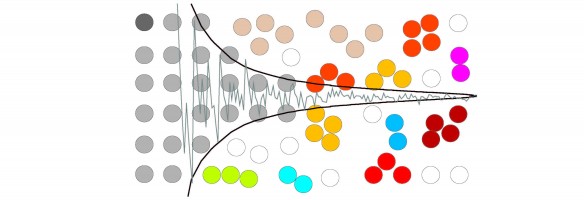
About Us
Is random really random?
Random phenomens can be sources of different regularities. One example is random distribution of spheres in a given space. Apparently easy task. However, try to fulfill some conditions, concerning volume fraction, size distribution. And we wish you good luck.
What you can get with our software?
Imagine that you have heterogenous systems with spherical inclusions. For example pudding with cherries. The inclusions are randomly distributed and sometimes you need analyze the system. You can see examples of tasks in our gallery
We defined following conditions:
- Volume fraction defined by user - Up to 40 volume %
- Defined particle size distribution function and number of particles 20 000particles.
- Particles must not intersect each to other
Building of model with user defined volume fraction, particle size distribution and number of particles is not so easy task
News
20th March 2009 - Modification for foam materials was finished See. gallery.
History of project
1986 - Tomvasyan published a model of self organization of randomly distributed particles
1988 - Original AGLOMER software was developed by Jiri Jelen and Jaroslav Kucera
2008 - New generation of Aglomer software. The new softwre enables processing of 10 000-100 000 particles. New version has controlled run and guaranted macroscopic homogenity.
8th March 2009 - Aglomer Webpage established
